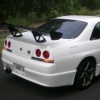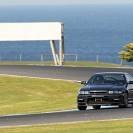Rb25 Flywheel Weight?
Announcements
-
Similar Content
-
Latest Posts
-
Welcome back to the scene! Godzilla Motorsports were well regarded back in the day. My GT-R had work done there prior to my ownership. SRS (Street Race Solutions) in Toowoomba worth a look. They've built some pretty wild Skylines. Their YouTube channel is comedic to watch! I'm sure they're all on the glass BBQ but they get shit done! 🤣
-
Hard to say what the extra connector is, it looks a bit like a coax type connector, so possibly a separate radio/GPS antenna, or even another camera input? The V37 series (including the Q50), did go through a model refresh in 2020, since Australia didn't get any Q50s newer than 2019, we didn't get any of the refreshed models, so there could also be other unexpected problems to overcome to swap an older Q50 head unit into a new model V37. There probably aren't too many people around that have made these sorts of changes to a Q50/V37, so you might end up being the first if you do decide to go ahead. ACP is Apple Car Play and AA is Android Auto, they are roughly the same thing for the 2 major phone operating systems (Apple's iOS and Android), it allows you to connect your phone and access a number of your phone applications on your car system. With Nav apps included, so you could use google maps/Waze or whatever your favourite navigation app is, instead of using the built in navi system. I think this would be a better solution if it is only Navigation that you are looking as swapping the head unit for. GPS signals are the same around the globe as the GPS satellites continuously circle the globe, but it is the head unit that doesn't allow you to load Australian maps, or at least no-one had made an Australian map that will load up on the JDM head unit. Regarding the TV standards, I assume you are referring to the AV inputs? I haven't ever tried to use them, Japan used a slightly modified version of the US NTSC system, and Australia uses PAL for composite video, that said, I wouldn't be surprised if a video input could work with either system. That is mostly irrelevant here though, unless you plan to use those inputs for something?
-
If you've got bucket loads of $. Go single. If not, just upgrade the twins, Garrett -9's or whatever the current equivalent is for a healthy 350awkw and leave it at that. Will probably still cost you 10k to do in this day and age.
-
When you looking to buy injectors?? I could possibly sell you my 1d1700s for decent price. Done little work I just need bigger again 😫
-






Recommended Posts
Create an account or sign in to comment
You need to be a member in order to leave a comment
Create an account
Sign up for a new account in our community. It's easy!
Register a new accountSign in
Already have an account? Sign in here.
Sign In Now